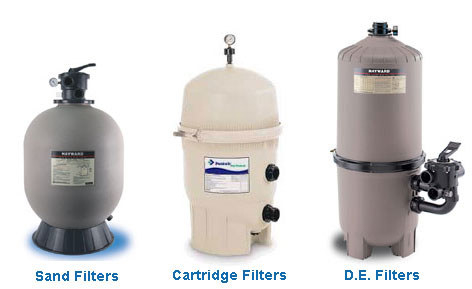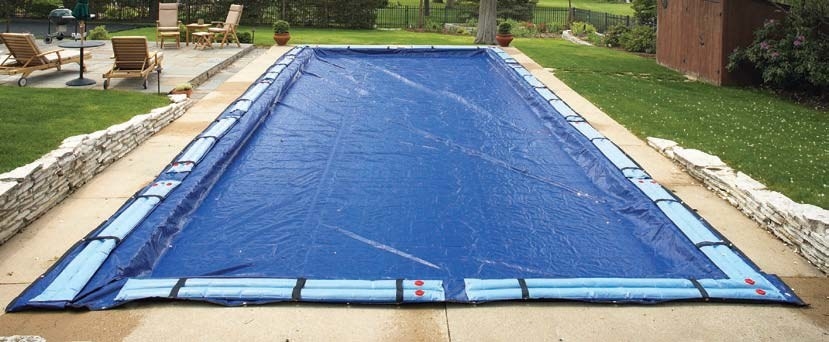1. Clean Out the Pool
Pool water collects leaves, insects, debris, and dirt throughout the summer. Ensure that you clean your pool to the best of your ability using a pool vacuum or net. Don’t forget about your skimmer and pump baskets, as well as the “scum line” near the edge of the pool. Remove ladders, skimmer baskets, solar blankets, and any other equipment that can be stored away for the winter. Don’t add any extra tablets or chlorine/bromine floaters as they can damage immobile equipment. Let existing tablets in chemical feeders run out so that none remain.
2. Make Sure Your Water Chemistry is Balanced

3. Shock Your Pool with Winter Algaecide
As total chemical levels stabilize, add winter algaecide to the pool in the recommended amount. Kits specifically made to winterize your pool are ready-made by pool retailers and are available based on pool sizes. These steps protect your pool from corrosion and scale build-up over the winter months. Read instructions carefully as some chemicals require that the pool filter is turned on while chemicals are added in order to avoid stains from undissolved granules or high concentrations of chemicals.
Kids Safety Tip: Keep chemicals and PPE (Personal Protective Equipment) used to handle chemicals out of reach of children. Ideally keeping these items under lock and key from all persons, children, and pets is the safest possible approach. Ensure that children are aware of the risks and understand the dangers that the chemicals might present.
4. Freezing Factor: How to Evade The Number One Enemy

5. Disconnect and Drain The Pump and Filter
All water must be drained or blown out of systems to winterize effectively. During the winter, trapped water can freeze and crack pipes, fittings, and hoses. This can result in major repair costs and flooding.
* Disconnect pump and filter.
* Remove any drain plugs as these may hold water inside.
* Once the pump has been drained turn it on for 1-2 seconds (no more), to allow for the impeller to get rid of any remaining water. Store small parts in the pump basket so you can find them easily for next year.
* Heaters should be drained and blown out using a compressor or shop vac. Similarly to the pump and filter, remove any drain plugs and stash them in the pump basket for next season.
* Jet fittings should be completely removed as well as skimmer baskets. Small items like fittings and dive board bolts can be placed inside the skimmer baskets.
* Loosen any quick-disconnect fittings or unions within your pump and filter system, and then blow out the pipes. Once again, a shop vac or air compressor is ideal for this.
* Force air from your pump down the skimmer and through the suction side pipes.
* Hook up your compressor to the return lines at the filter system, or by attaching it into the pumps drain plug in order to blow out the return plumbing. Keep doing this until you see air bubbles coming out of the return jets, then tightly plug the fitting below the water line.
* Also, blow out the main drain line if applicable. When you see bubbles coming out of the drain, close the gate valve. This creates an air lock in the line which means that no more water will be able to enter from the poolside.
6. Clean the Filter

7. Cover Your Pool

8. Make The Winterized Pool Safe For Your Kids
Never leave kids unattended around the pool, especially if ice is present and the ground is slippery! Ensuring that all equipment and chemicals are safely stored and out of reach will also ensure the ultimate safety for your children throughout the winter months.

